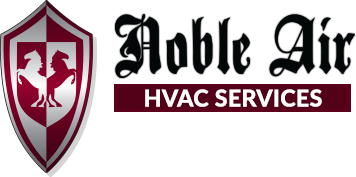Found throughout Europe, China, and Japan, VRF HVAC systems, or, variable refrigerant flow systems, are increasingly becoming available in the United States. These heating and cooling systems are ideal for commercial spaces, and, even large residential homes. Businesses now have the option to install a VRF HVAC system on their properties, and, when you learn about its function and capabilities, it’s little wonder why these are a popular choice. Offering the latest and greatest in heating and cooling technology, variable refrigerant flow systems are designed to provide the utmost comfort while saving substantially on operation costs. In addition, there are more benefits to commercial VRF HVAC systems.
Benefits of Commercial VRF HVAC Systems
Over the past five to ten years, variable refrigerant flow systems have made their way from Japan, Europe and China to the United States. These heating and cooling systems are particularly popular for urbanized areas, like Phoenix. Like conventional commercial HVAC units, VRF systems are air-cooled and refrigerant-based equipped, with outside condenser units and indoor fan coils. However, this is where the similarities end in comparison with other, more recognizable, heating and cooling systems.
Variable refrigerant flow systems (VRF) are a more sophisticated version of the minisplit HVAC system used throughout the world. They distribute the refrigerant instead of piping hot water and chilled water to each fan coil unit (FCU) or air handling unit (AHU). By supplying different amounts of refrigerant to evaporators, the systems provide simultaneous heating and cooling. —Buildings.com
Rather than pumping cool or heated air through one large, noisy air handler, variable refrigerant flow systems are equipped with a network of smaller delivery units. These individual air handlers can be controlled one-by-one, and, pipe air back into the system. This type of network operation is why these are called variable refrigerant flow systems. The heating and cooling system controls the amount of refrigerant delivered to the individual air handlers, hence “variable refrigerant flow.”
- Quiet and more energy-efficient. Because variable refrigerant flow systems use individual air handlers, there’s less noise during operation. Also, because the refrigerant flow is regulated based on need, these systems are more energy-efficient.
- Heat and cool commercial spaces simultaneously. One of the more fantastic features of VRF HVAC systems is these capture any residual heat created during the cooling process and said heat is then distributed to parts of the building that need to be warmed. This allows businesses to deliver heat in individual offices while cooling large meeting spaces.
- Provides a more consistent level of creature comfort. Another great feature is the VRF HVAC system’s ability to deliver consistent levels of creature comfort. The compressor monitors each zone and sends the right amount of heated or cooled air in-order to prevent cold or warm spots.
- Enjoy less downtime during maintenance and repairs. Because of its design and configuration, there’s less downtime when the system is under maintenance or is being repaired. This allows businesses to continue normal operation in other zones while one is being serviced. In addition, this means less of a load to handle, which helps to extend the life of the HVAC system.
- VRF HVAC systems require less space in commercial buildings. Since there are multiple air handlers, these parts are small, and most VRF HVAC systems don’t require ductwork, saving space in a commercial building while still keeping it comfortable.
In addition to these benefits, the controls are also more modern and provides you with the advantage of avoiding purchasing costly commercial building management software.

